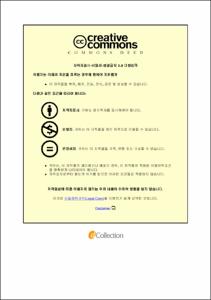Biofloc technology: a new approach to zebrafish (Danio rerio) larval culture
- Alternative Title
- Biofloc 기술: zebrafish (Danio rerio) 유생 문화에 대한 새로운 접근법
- Abstract
- The objective of this experiment is to use Biofloc as an alternative cost-effective technology on the growth and survival rate in Zebrafish (Danio rerio) larvae. Before starting the experiment, detritus water was collected from Zebrafish´s broodstock tank by siphoning, which served as the main nutrient source. This material included uneaten food and feces from adult zebrafishes, providing nutrients for a biofloc food chain to support newly hatched larvae. Ammonia (NH3) in detritus water was measured to determine the amount present in order to set up Biofloc culture with a Carbon/Nitrogen ratio of 10:1, honey (82% C) was used as the main carbon source and infusoria, N-fixing bacteria, and a brewer´s yeast culture derived from Guiness Stout were added to enrich the Biofloc microbial community for 1 week. Four 2L beakers were set up and 100 larvae (3.55 ± 0.08 mm) with 120 hours post fertilization (hpf) were stocked per each one; total length was measured at the beginning of the experiment; temperature was maintained at 28 ± 1 °C, color water and pH were measured daily, while Ammonia (NH3) was measured once a week; the abundance of protozoa and other microorganisms was checked once a week. The survival rate was 45 ± 6.06 (%) and final total length was 6.51 ± 0.27 (mm), water quality obtained for pH was 7.58 ± 0.07, and Ammonia (NH3) was 0.09 ± 0.04 (mg/L). Finally, the cost of the carbon source used in the experiment was calculated to be 0.005 US$ per 2L culture system. Biofloc system is relatively inexpensive and provides a sufficient culture environment to support the growth and survival of zebrafish larvae, while avoiding the discharge of wastes from the broodstock colony.
- Issued Date
- 2019
- Awarded Date
- 2019. 2
- Type
- Dissertation
- Publisher
- 부경대학교
- Affiliation
- 부경대학교 세계수산대학원
- Department
- 세계수산대학원 양식기술전공
- Advisor
- Christopher Lyon. Brown
- Table Of Contents
- 1 Introduction 1
1.1 Problem Statement 2
1.2 Hypothesis 3
1.3 Objectives 3
1.4 Justification of the study 3
2 Background and Literature Review 4
2.1 Zebrafish 4
2.1.1 Scientific Classification 4
2.1.2 Distribution 5
2.1.3 Morphology 5
2.1.4 Diet 6
2.1.5 Life Cycle 6
2.2 Biofloc 8
2.2.1 Concept of Biofloc 8
2.2.2 Biofloc technology 9
2.2.3 Types of Biofloc System 9
2.2.4 Carbon-Nitrogen ratio 10
2.2.5 Microbial Community 10
2.2.6 Nutritional composition 11
2.2.7 Application of Biofloc in fish culture 11
3 Materials and Methods 13
3.1 Study site 13
3.2 Origin of the fish 14
3.3 Biofloc preparation 15
3.4 Experimental design 18
3.5 Data collection 20
3.6 Water quality analysis 22
3.7 Parameter analysis 23
4 Results and Discussion 24
4.1 Fish Performance 24
4.2 Water quality parameters 27
4.3 Cost-effective of biofloc system for zebrafish larvae 30
5 Conclusion 31
6 Bibliography 32
- Degree
- Master
- Files in This Item:
-
-
Download
 Biofloc technology: a new approach to zebrafish (Danio rerio) larval culture.pdf
기타 데이터 / 1.07 MB / Adobe PDF
Biofloc technology: a new approach to zebrafish (Danio rerio) larval culture.pdf
기타 데이터 / 1.07 MB / Adobe PDF
-
Items in Repository are protected by copyright, with all rights reserved, unless otherwise indicated.